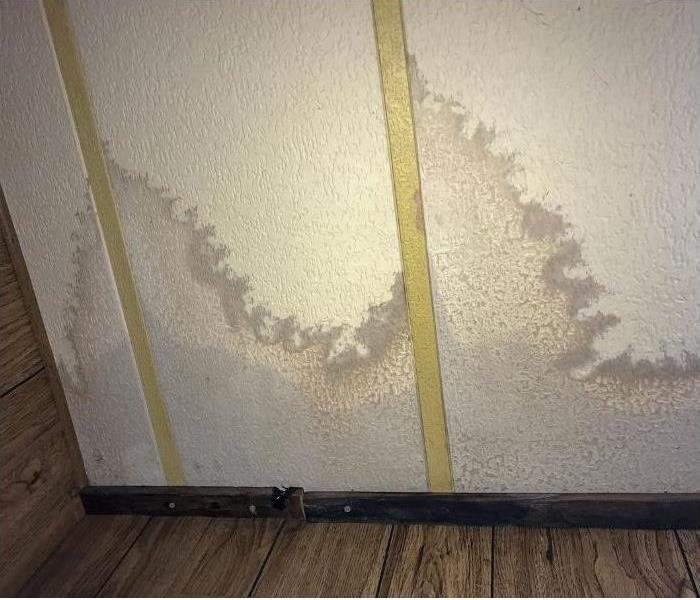The Comprehensive Guide to Water Leak Repair: Detect, Fix, and Prevent Leaks for a Healthy Home
8/17/2023 (Permalink)
Water leaks can cause significant damage to your property if not addressed promptly and professionally. In this extensive guide, we will delve into all aspects of water leak repair, shedding light on common types, causes, detection methods, and prevention techniques. We'll also explore DIY repair when to hire a professional, and the role of insurance in covering water leak repair costs.
Identifying the Common Types of Water Leaks
There are numerous types of water leaks that could occur in residential and commercial buildings, including:
Pipe Leaks
Often due to corrosion or high water pressure, these can occur anywhere in your plumbing system.
Faucet Leaks
Dripping faucets can waste a considerable amount of water over time.
Toilet Leaks
Caused by issues in the flushing system, these can lead to high water bills.
Underground Water Leaks
Often challenging to detect, these leaks can cause significant damage to your landscape and foundation.
Roof Leaks
Resulting from damaged or worn-out roofing materials can lead to serious structural damage if ignored.
Pool Leaks
This can lead to significant water loss and damage to the pool structure.
Leaks in Appliances: Washing machines, dishwashers, and water heaters are all susceptible to leaks.
Unraveling the Causes of Water Leaks
Understanding the causes of water leaks is the first step toward effective prevention. Some of the most common causes include:
- Pipe Corrosion: Older properties with copper pipes are often susceptible to corrosion over time.
- High Water Pressure: Excessive pressure can lead to pipe damage and subsequent leaks.
- Poorly Installed Pipelines: Incorrectly installed pipelines can cause leaks and other plumbing issues.
- Worn-Out Seals: Seals around appliances and fixtures can wear out over time, leading to leaks.
- Clogged Lines: Blockages can cause pressure buildup, leading to leaks or even burst pipes.
- Temperature Changes: Sudden or extreme temperature changes can cause pipes to crack, resulting in leaks.
The Art of Detecting a Water Leak
Water leaks, especially those that are underground or within walls, can be tricky to detect. Here's how you can catch them:
- Water Meter Check: An unusually high reading might indicate a leak.
- Visual Inspection: Look for damp spots, mold, and mildew on walls, ceilings, and floors.
- Moisture or Mold Detection: Professional services can help detect hidden mold and moisture problems.
- Increased Water Bill: An inexplicable rise in your water bill could point towards a leak.
- Unusual Sounds: Hissing or dripping sounds can indicate a water leak.
The DIY Approach to Water Leak Repair
Depending on the severity of the leak, you may be able to fix it yourself. Here are some key considerations:
- Basic Tools Needed: You'll need a wrench, plumber's tape, and potentially replacement parts.
- Step-by-step Procedures: The repair process varies depending on the type and location of the leak.
- Safety Precautions: Always turn off the water supply before attempting any repair.
- When to Call a Professional: If the leak is severe, inaccessible, or you're unsure about how to repair it, seek professional help.
Opting for Professional Water Leak Repair Services
Hiring a professional can often save time and prevent further damage. Here's what you should know:
- Benefits of Hiring a Professional: They bring expertise, experience, and specialized tools to handle all types of leaks.
- Choosing the Right Service Provider: Look for licensed, insured, and well-reviewed plumbing contractors.
- Estimating the Cost of Leak Repair Services: Costs can vary based on the type and severity of the leak, and the required repair method.
Understanding the Consequences of Water Damage
If not promptly addressed, water leaks can lead to:
- Structural Damage to the Building: Prolonged exposure to water can weaken structural materials.
- Health Issues from Mold and Mildew: Damp conditions encourage the growth of mold and mildew, which can cause health problems.
- Damage to Personal Property: Furniture, electronics, and other personal items can be damaged by water exposure.
Keeping Leaks at Bay: Prevention Techniques
Preventing leaks from happening in the first place is key. This includes:
- Regular Maintenance: Routine checks can help detect potential problems before they become serious.
- Proper Installation of Pipelines: Ensure professional installation of pipes and appliances to prevent future leaks.
- Importance of Quality Materials: High-quality plumbing materials can better withstand wear and tear.
Navigating Insurance for Water Leak Repair
Some homeowners' insurance policies cover water leak repair. It's crucial to:
- Understand What's Covered: Not all types of leaks and water damage are covered by insurance.
- Navigate the Claims Process: Document the damage, report promptly, and work closely with the insurance adjuster.
Embracing Technology for Leak Detection and Repair
Modern technology has brought solutions that make it easier to detect and repair leaks. Examples include:
- Smart Water Leak Detectors: These devices can monitor water usage and detect leaks in real time.
- Advanced Leak Detection Techniques: Professionals may use infrared technology and acoustic sensors to find hidden leaks.
Conclusion
By understanding and implementing this comprehensive guide to water leak repair, homeowners and property managers can ensure the longevity and health of their buildings. Always remember, when it comes to water leaks, prevention, and timely repair are the best strategies to save money and protect your property.






 24/7 Emergency Service
24/7 Emergency Service
